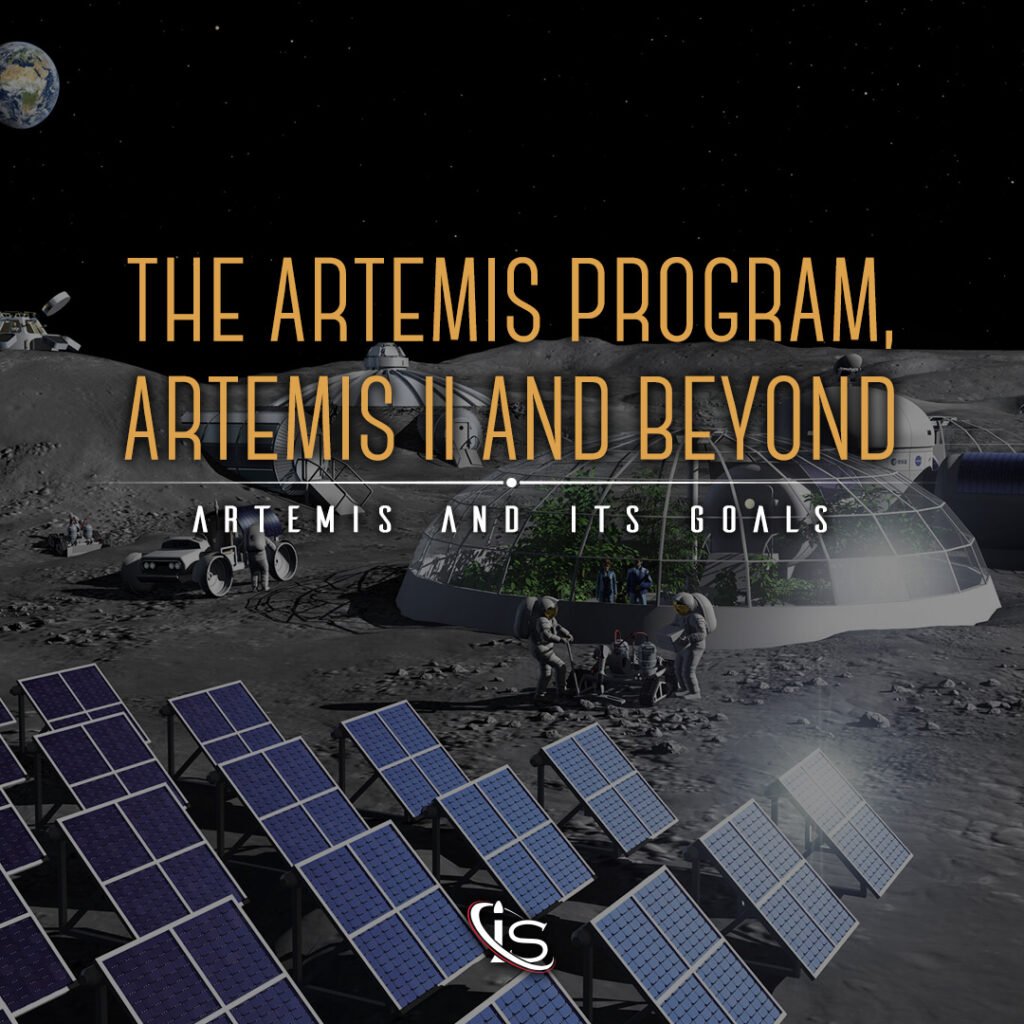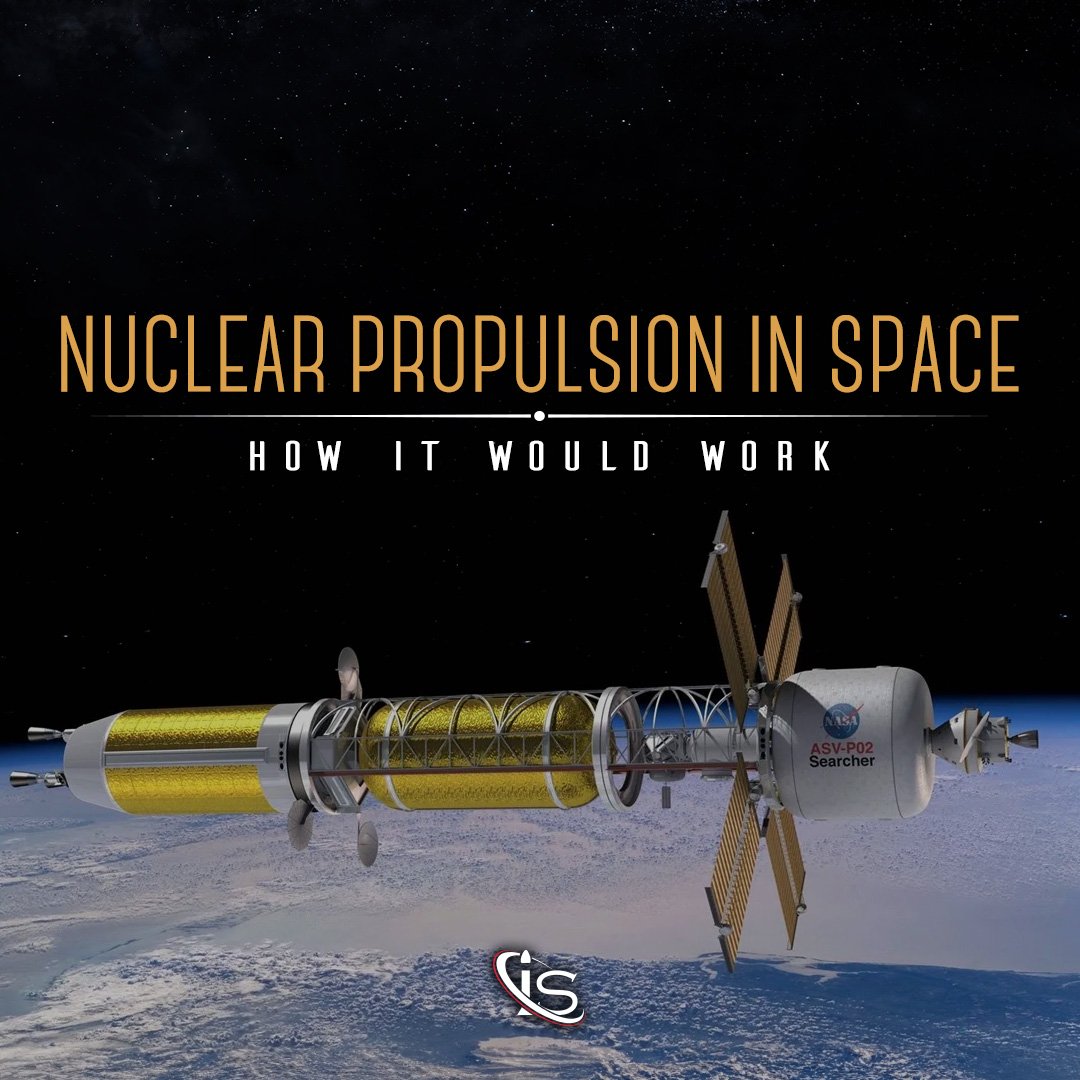Welcome back to our monthly historical milestone series. In the past, we have discussed the endeavors of the US and Soviet Union in the space race many times. But they have always come separately. However, that is not the case for today’s milestone. Because on this day, in 1975, the two global superpowers joined forces for a very special mission. The first ever international human spaceflight to be exact. And that mission was known as the Apollo-Soyuz Test Project. So, without further ado, let’s dive into one of the most surprising collaborations in the history of the space industry.
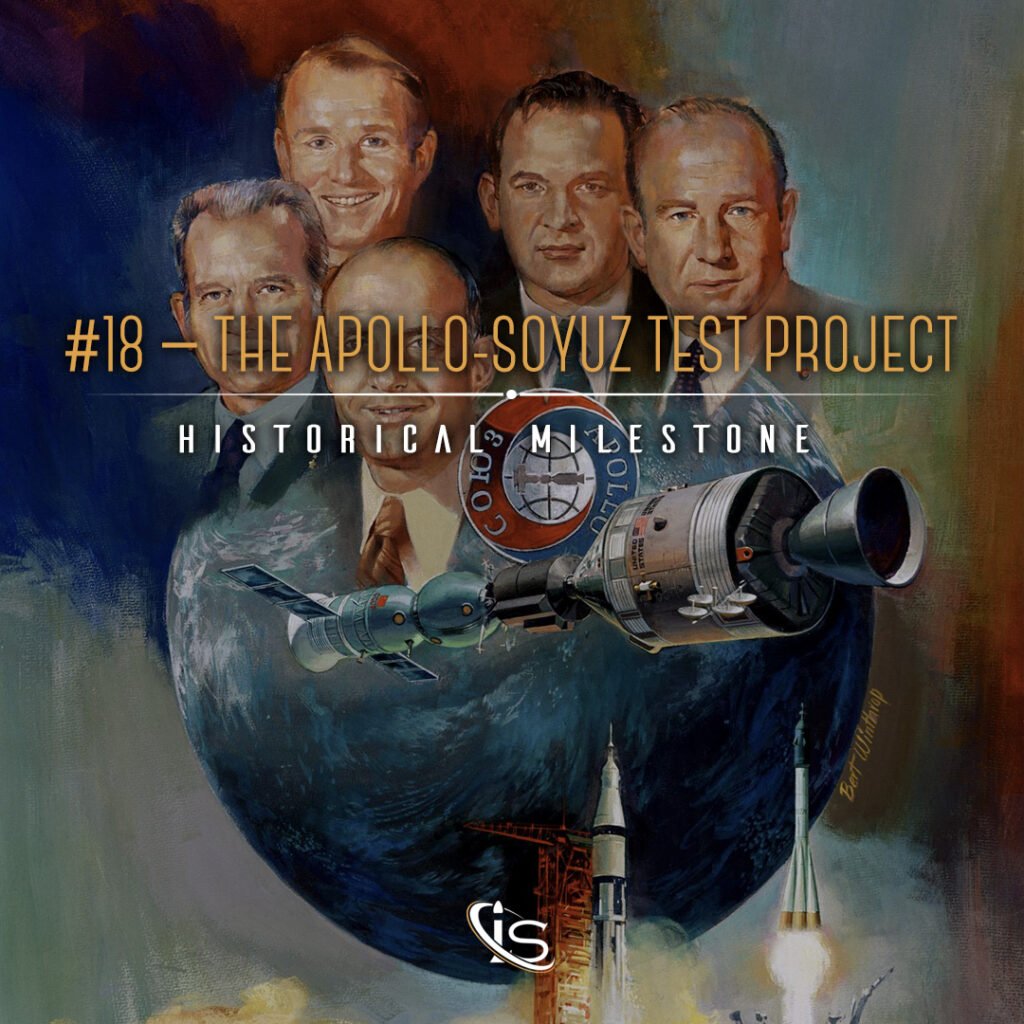
Getting Ready for the Mission
As is customary with these milestones, I’d like to start by setting the stage for the mission in question. However, the “training” I want to focus on today is not the standard space-oriented one. Instead, what I believe is really crucial to understand is the cultural preparations the two crews underwent for this joint spaceflight. As this happened in the mid 1970’s, the Cold War was still very much alive. So, to say that the US and Soviet Union did not have the best of relations would be an understatement. So, before any collaboration could take place, it was necessary to tear down some walls. Not the physical kind, like what would happen in Berlin 14 years later, but rather cultural one.
The Apollo-Soyuz Crew Breaks the Ice
This started by having the 5 people chosen for the mission experience the other’s culture and customs, as well as just getting them acquainted with one another. The crew in question consisted of 3 American astronauts and 2 Soviet cosmonauts. The astronauts were Vance Brand, Tom Stafford, and Deke Slayton, while the cosmonauts consisted of Aleksey Leonov and Valeriy Kubasov. The results of this pre-collaboration were stellar and best summarized by the following Vance Brand quote: “we thought they were pretty aggressive people and … they probably thought we were monsters. So, we very quickly broke through that, because when you deal with people that are in the same line of work as you are, and you’re around them for a short time, why, you discover that, well, they’re human beings.”.
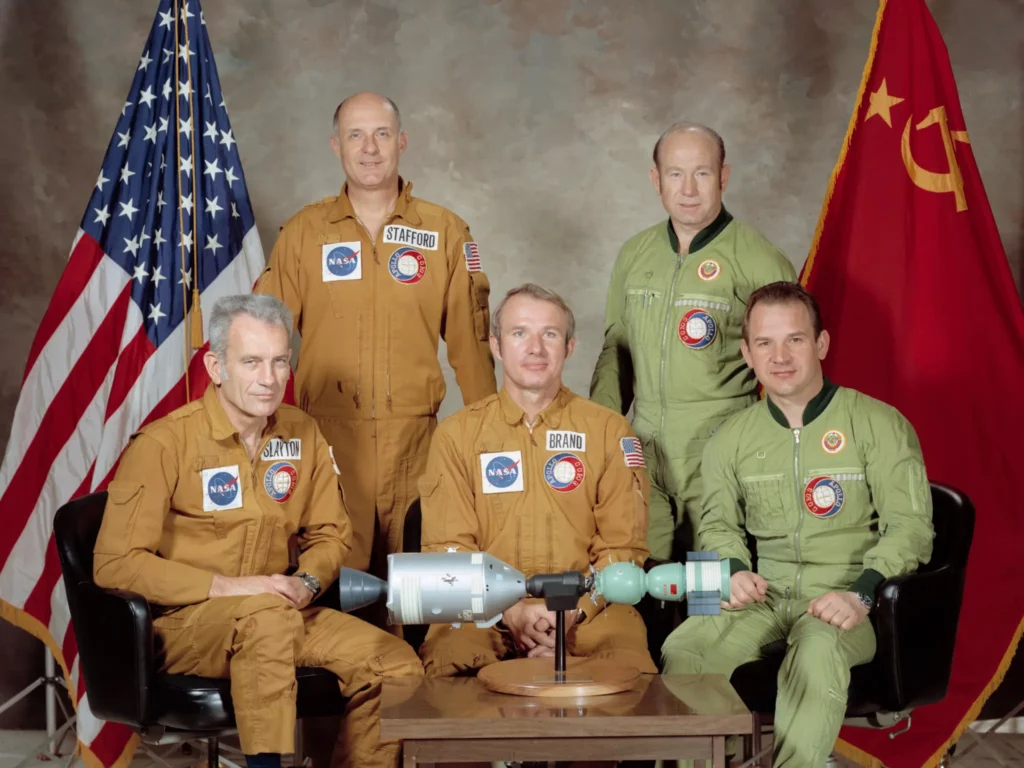
Another great step that was taken to facilitate the collaboration between the two groups came from Stafford and the Russian backup commander. In order to encourage communication between the two crews, they decided it would be beneficial to speak in each other’s launguages. This proved to be a turning point as before they would mostly only communicate among themselves. There really is not much more to say about this, though I do want to stress just how important of a moment this was. To go from the Cold War tensions to spearheading the first international human spaceflight together is no small feat. And it would not have been possible without breaking down the cultural divide between these two nations, first.
The Apollo-Soyuz Test Project
And now, it is time to talk about the actual mission, itself. Unlike many of the ones we discuss in these milestones, the date we picked for its “anniversary” is not the launch. But to get to that, we need to discuss what the mission was trying to accomplish, first. Other than the small detail of being the first time the US and the Soviet Union were collaborating in space (I hope the sarcasm is coming through even via writing there), the goal for the mission was to dock two completely separate spacecrafts together in space. This was done to test whether an international space rescue was possible, should the need for one ever arise.
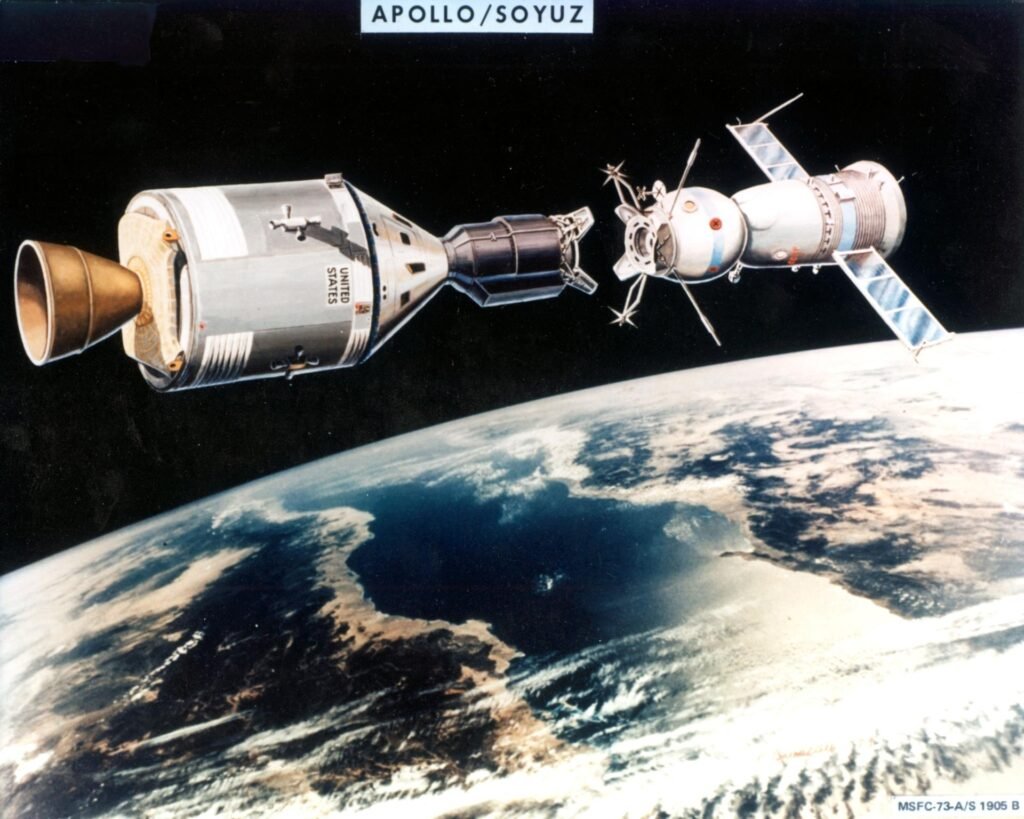
And so, the Apollo and Soyuz spacecraft were chosen. The first due to it being the one to first bring man on the Moon and the second due to it being the one primarily responsible for Soviet crewed spaceflights since its inception. The only thing missing was a docking module. To fix that the two countries decided to, quite appropriately, design one together. And with that done, everything was in order for the first ever international human spaceflight.
July 17th, 1975
The day was July 15th, 1975, when two spacecrafts took off towards space… and towards making history. Of course, these were the Apollo and Soyuz spacecraft, with the 5 protagonists of this story on board. Then, a mere two days later, history was indeed made. The two spacecrafts approached each other in space, ready to dock together. And I think this joke by Soyuz commander, Aleksey Leonov, perfectly encapsulates how comfortable the two crews had gotten with each other. “Tom, please don’t forget about your engine.”
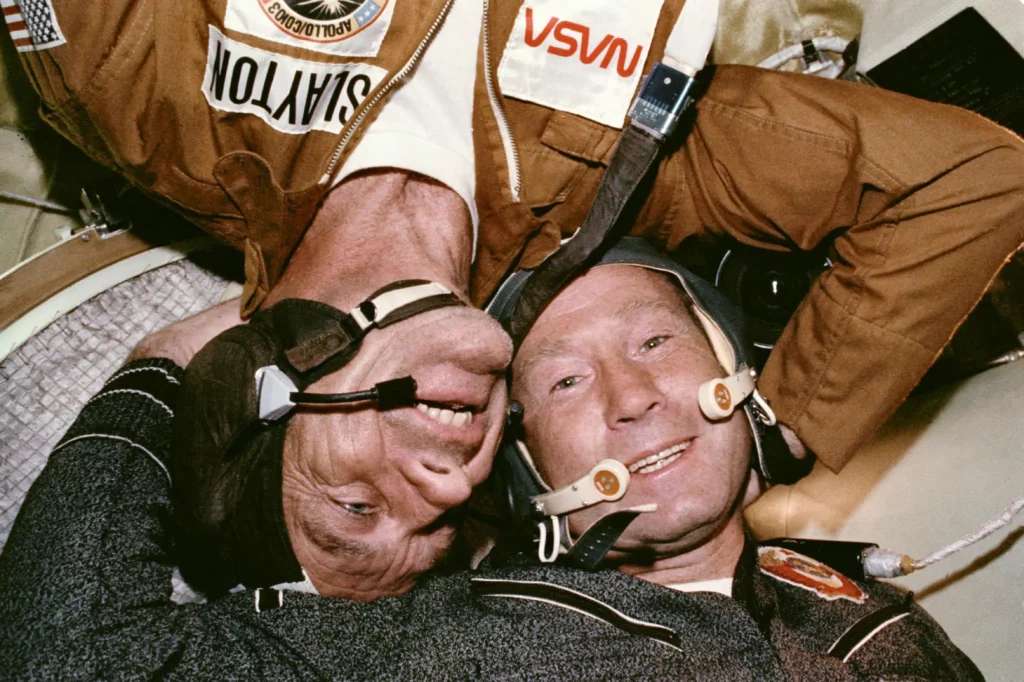
But just a few hours later, the two spacecrafts did successfully dock together, with the two crews meeting up, shaking hands, and exchanging gifts. And for as impressive a technical feat as that docking was, I can’t help but feel that the human one was even more so. But that might just be the romantic in me talking.
And before leaving you, I have one final fun fact. The Apollo commander, Tom Stafford, had gotten country music star, Conway Twitty, to record “Privet Radost”, the Russian version of his hit “Hello Darlin’”. This song played an hour before docking and was heard all around the world. Given the cross-cultural nature of this whole mission, I couldn’t fail to include this.
I hope you have enjoyed learning about one of the most unique missions in the history of space. I loved writing and researching this, so I’m very glad I was able to share this with you all. See you next time, right here, at impulso.space.



